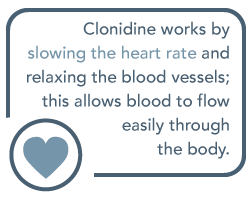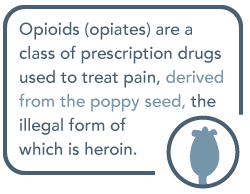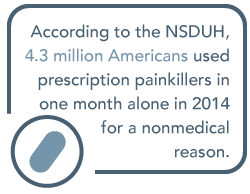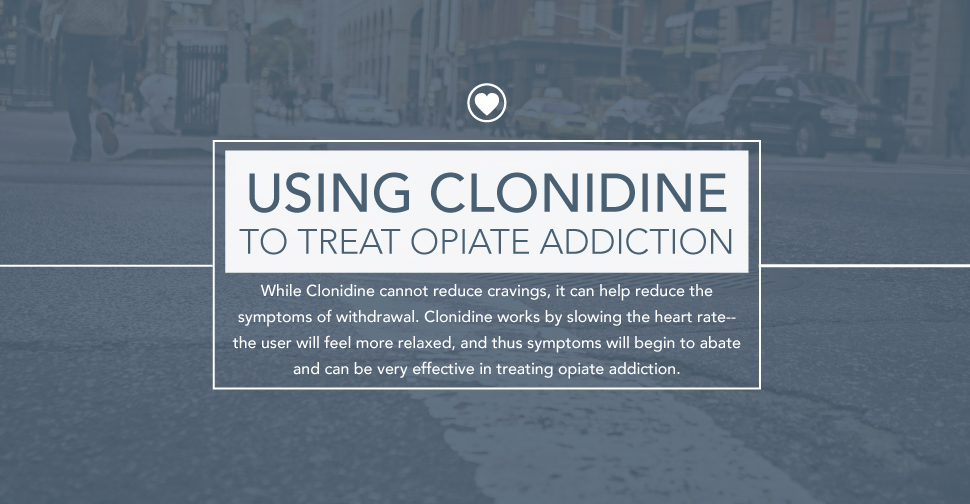What Is Clonidine?
Traditionally, Clonidine is a medication used to treat high blood pressure, according to the U.S. National Library of Medicine. Clonidine may also be used to treat attention deficit hyperactivity disorder (ADHD), either by itself or in combination with other medications. Clonidine works by slowing the heart rate and relaxing the blood vessels; this allows blood to flow easily through the body.
Opiate Addiction: How Clonidine Helps Combat Withdrawal
Although the intended use of Clonidine is not for the treatment of opiate addiction, use of clonidine to treat opiate addiction has been successful. For this reason, the medication should not be overlooked when exploring options for medical treatment of opiate addiction. When going through treatment, opiate users may experience some severe withdrawal symptoms, according to the National Library of Medicine. Early symptoms may include the following:
- Agitation
- Anxiety
- Muscle aches
- Increased tearing
- Insomnia
- Runny nose
 Sweating
Sweating- Yawning
Further symptoms may also include:
- Abdominal cramping
- Diarrhea
- Dilated pupils
- Goose bumps
- Nausea
- Vomiting
Fortunately, Clonidine works to combat many of these symptoms. While it cannot reduce cravings, it can help reduce the effects of anxiety, agitation, muscle aches, sweating, runny nose, and cramping. Remember, the medication works by slowing the heart rate—the user will feel more relaxed, and thusly, symptoms will begin to abate. Used together with medication to help treat other symptoms, Clonidine can be very effective in treating opiate addiction.
Opiate Addiction: The Risk
Opioids (synthetic opiates) are a class of prescription drugs used to treat pain, derived from the poppy seed, the illegal form of which is heroin. Because of the euphoric effect opioids have on the user, they present a very high risk for addiction. Unfortunately, some opioids, such as extended release oxycodone, are intended to relieve pain over a period of time. Someone abusing this medication may find other ways to force the release immediately—such as crushing the pill and snorting it, according to the National Institute on Drug Abuse.
 One of the other problems the National Institute on Drug Abuse found is that, because prescription opioids can be safe when taken as directed, it is hard to market the highly addictive risk of opioid abuse and to show the potential for abuse of opioids. In other words, not everyone knows or believes they can become addicted to prescription opioids, but it is an increasing problem and it is easy to become victim to abuse of these drugs.
One of the other problems the National Institute on Drug Abuse found is that, because prescription opioids can be safe when taken as directed, it is hard to market the highly addictive risk of opioid abuse and to show the potential for abuse of opioids. In other words, not everyone knows or believes they can become addicted to prescription opioids, but it is an increasing problem and it is easy to become victim to abuse of these drugs.
Further Research And New Findings
While Clonidine can be effective in treating withdrawal symptoms, researchers are combining efforts to find a medication which will help treat the addiction. In a test study at the National Institute on Drug Abuse, the Clinical Trials Network tested the effectiveness of combining two formerly used medications to treat opiate addiction: buprenorphine and naloxone. The findings were substantial; combining these two medications meant an increased success rate for those weaning from opiate addiction. To read more about this research effort, read on here.
Treating Opiate Addiction: Why It’s Important
 Prescription opioid addiction is a problem of epidemic proportions, according to the National Institute on Drug Abuse. In fact, in a statement released by President Obama and published on the White House website, the president declared that this week—September 16 to September 24, 2016—is officially Prescription Opioid and Heroin Epidemic Awareness Week.
Prescription opioid addiction is a problem of epidemic proportions, according to the National Institute on Drug Abuse. In fact, in a statement released by President Obama and published on the White House website, the president declared that this week—September 16 to September 24, 2016—is officially Prescription Opioid and Heroin Epidemic Awareness Week.
In addition to the fact that opioid abuse can lead to addiction, it can also lead to dependence, subsequent tolerance, and, as a result, fatal overdose. What may be even worse, though, is the fact that opioid addiction can lead to increased use of heroin. This is terrifying, when considering that, according to the National Survey on Drug Use and Health, 4.3 million Americans used prescription painkillers in one month alone in 2014 for a nonmedical reason. Even more use prescription painkillers for nonmedical reasons every day. The Survey also found that 1.4 million users took prescription painkillers for a nonmedical reason for the first time in the year 2014, according to the Substance Abuse and Mental Health Services Administration.
To be sure, the prescription opioid epidemic has led to the increased use of heroin already, and that is why seeking treatment for addiction is so important. Find effective treatment for you or your loved one before you fall prey to a fatal overdose.
Seeking Help
Maybe in reading about this topic today, you are searching for answers, or maybe you just want to know how to take the next step in finding help for you or someone  close to you. Do not be part of the epidemic; do not let opiate addiction claim your life. There is treatment available, effective treatment like clonidine, that will help put you on the right path to recovery. Contact us today at DrugRehab.org to take the next step in your journey to recovery.
close to you. Do not be part of the epidemic; do not let opiate addiction claim your life. There is treatment available, effective treatment like clonidine, that will help put you on the right path to recovery. Contact us today at DrugRehab.org to take the next step in your journey to recovery.
Sources
National Institute on Drug Abuse– Buprenorphine/Naloxone (Bup/Nx) versus Clonidine for Outpatient Opiate Detoxification
Substance Abuse and Mental Health Services Administration– Opioids
U.S. National Library of Medicine– Clonidine
U.S. National Library of Medicine– Opiate and Opioid Withdrawal


